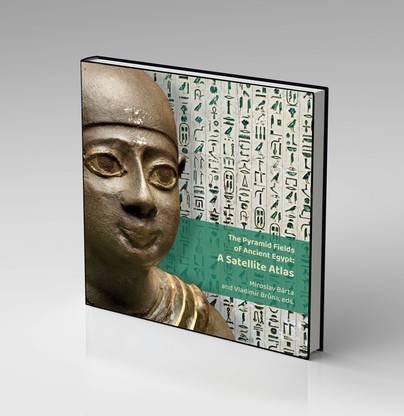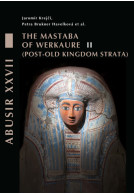The Pyramid Fields of Ancient Egypt: A Satellite Atlas (Hardback)
Imprint: Czech Institute of Egyptology
Pages: 200
ISBN: 9788076710535
Published: 28th July 2022
Script Academic & Professional
Pages: 200
ISBN: 9788076710535
Published: 28th July 2022
Script Academic & Professional
You'll be £142.00 closer to your next £10.00 credit when you purchase The Pyramid Fields of Ancient Egypt: A Satellite Atlas. What's this?
+£4.99 UK Delivery or free UK delivery if order is over £40
(click here for international delivery rates)
Need a currency converter? Check XE.com for live rates
(click here for international delivery rates)
Need a currency converter? Check XE.com for live rates
This volume offers a valuable resource by compiling and interpreting high-resolution satellite images of all Old and Middle Kingdom pyramid sites in Egypt. The sites included in this Atlas represent to a large degree the principal sites of the third- through the thirteenth-Dynasty. Their particular characteristics mirror the specific periods of Egyptian history, providing a fascinating window into the incredible story of ancient Egypt.
Sites covered include (starting in the north): Abu Rawash, Giza, Zawiyet el-Aryan, Abusir, Saqqara, Dahshur, Mazghuna, Lisht, Meidum, Lahun, Hawara and Abydos. Also featured is the site of Abu Ghurob, with the two sun temples of Userkaf and Nyuserra of the fifth-Dynasty and the so-called minor step pyramids dating from the late third- to the early fourth-Dynasty. These start in Seila at the northeastern edge of the Faiyum Oasis and include – proceeding those of Zawyet Sultan – Nubt (Naqada), Abydos (Sinki), Hierakonpolis (el-Kula), Edfu (Ghonemeia) and Elephantine.
The individual sites are characterised on the background of their local topography and changing nature of their development over time as reflected by the position of individual monuments, including the principal pyramids of the Old and Middle Kingdom. Each each site provides a different story in terms of its structure and content, reflecting the simple fact that every site developed under different conditions, in different local setting, had its own internal logics, its pace and its genuine characteristics. Each site also reflects a specific historical situation and tells a different story of its development and rediscovery.
Most pyramid fields are increasingly more intensively endangered by modern development and locally-dominated neglect of the need for their preservation. It is strongly believed that the latest technological advances, including the satellite imaging in Egyptology, will ultimately translate into their systematic use in sites’ protection and management, site and landscape analysis and long-term strategies for both ongoing and future excavation and survey projects in Egypt.
Other titles in Czech Institute of Egyptology...















